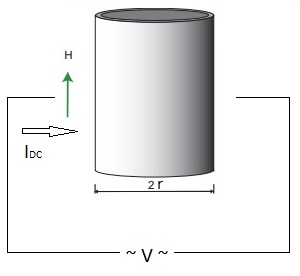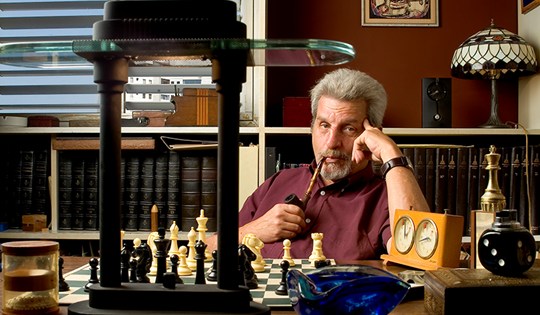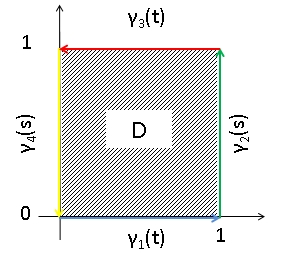|
Little–Parks Effect
The Little–Parks effect was discovered in 1962 by William A. Little and Roland D. Parks in experiments with empty and thin-walled superconducting cylinder (geometry), cylinders subjected to a parallel magnetic field.W. A. Little and R. D. Parks, “Observation of Quantum Periodicity in the Transition Temperature of a Superconducting Cylinder”, ''Physical Review Letters'' 9, 9 (1962), do10.1103/PhysRevLett.9.9/ref> It was one of the first experiments to indicate the importance of Cooper pair, Cooper-pairing principle in BCS theory. The essence of Little–Parks (LP) effect is slight suppression of the superconductivity by persistent current. Explanation The electrical resistance of such cylinders shows a Frequency, periodic oscillation with the magnetic flux piercing the cylinder, the period being :''h''/2''e'' ≈ where ''h'' is the Planck constant and ''e'' is the electron charge. The explanation provided by Little and Parks is that the resistance oscillation reflects a more ... [...More Info...] [...Related Items...] OR: [Wikipedia] [Google] [Baidu] |
Superconducting
Superconductivity is a set of physical properties observed in certain materials where Electrical resistance and conductance, electrical resistance vanishes and magnetic field, magnetic flux fields are expelled from the material. Any material exhibiting these properties is a superconductor. Unlike an ordinary metallic electrical conductor, conductor, whose resistance decreases gradually as its temperature is lowered even down to near absolute zero, a superconductor has a characteristic Phase transition, critical temperature below which the resistance drops abruptly to zero. An electric current through a loop of superconducting wire can persist indefinitely with no power source. The superconductivity phenomenon was discovered in 1911 by Dutch physicist Heike Kamerlingh Onnes. Like ferromagnetism and atomic spectral lines, superconductivity is a phenomenon which can only be explained by quantum mechanics. It is characterized by the Meissner effect, the complete ejection of magne ... [...More Info...] [...Related Items...] OR: [Wikipedia] [Google] [Baidu] |
Electromagnetic Potential
An electromagnetic four-potential is a relativistic vector function from which the electromagnetic field can be derived. It combines both an electric scalar potential and a magnetic vector potential into a single four-vector.Gravitation, J.A. Wheeler, C. Misner, K.S. Thorne, W.H. Freeman & Co, 1973, As measured in a given frame of reference, and for a given gauge, the first component of the electromagnetic four-potential is conventionally taken to be the electric scalar potential, and the other three components make up the magnetic vector potential. While both the scalar and vector potential depend upon the frame, the electromagnetic four-potential is Lorentz covariant. Like other potentials, many different electromagnetic four-potentials correspond to the same electromagnetic field, depending upon the choice of gauge. This article uses tensor index notation and the Minkowski metric sign convention . See also covariance and contravariance of vectors and raising and lowering in ... [...More Info...] [...Related Items...] OR: [Wikipedia] [Google] [Baidu] |
Magnetoresistance
Magnetoresistance is the tendency of a material (often ferromagnetic) to change the value of its electrical resistance in an externally-applied magnetic field. There are a variety of effects that can be called magnetoresistance. Some occur in bulk non-magnetic metals and semiconductors, such as geometrical magnetoresistance, Shubnikov–de Haas oscillations, or the common positive magnetoresistance in metals. Other effects occur in magnetic metals, such as negative magnetoresistance in ferromagnets or anisotropic magnetoresistance (AMR). Finally, in multicomponent or multilayer systems (e.g. magnetic tunnel junctions), giant magnetoresistance (GMR), tunnel magnetoresistance (TMR), colossal magnetoresistance (CMR), and extraordinary magnetoresistance (EMR) can be observed. The first magnetoresistive effect was discovered in 1856 by William Thomson, better known as Lord Kelvin, but he was unable to lower the electrical resistance of anything by more than 5%. Today, systems includi ... [...More Info...] [...Related Items...] OR: [Wikipedia] [Google] [Baidu] |
Aharonov–Bohm Effect
The Aharonov–Bohm effect, sometimes called the Ehrenberg–Siday–Aharonov–Bohm effect, is a quantum mechanical phenomenon in which an electrically charged particle is affected by an electromagnetic potential (φ, A), despite being confined to a region in which both the magnetic field B and electric field E are zero. The underlying mechanism is the coupling of the electromagnetic potential with the complex phase of a charged particle's wave function, and the Aharonov–Bohm effect is accordingly illustrated by interference experiments. The most commonly described case, sometimes called the Aharonov–Bohm solenoid effect, takes place when the wave function of a charged particle passing around a long solenoid experiences a phase shift as a result of the enclosed magnetic field, despite the magnetic field being negligible in the region through which the particle passes and the particle's wavefunction being negligible inside the solenoid. This phase shift has been observed ex ... [...More Info...] [...Related Items...] OR: [Wikipedia] [Google] [Baidu] |
Altshuler
Altschuler, Altshuler, Altschuller (russian: Альтшуллер), Altshuller (russian: Альтшуллер), Altschueler, Altshueler, or Alschuler is a Jewish surname of Ashkenazi origin. It is derived from the Altschul, Old Synagogue in Prague.Jewish Encyclopedia, 1906Altschul, Altschuler, Altschueler, or Alschuler/ref> Alschuler is the surname of * Alfred S. Alschuler (1876–1940), American architect * George W. Alschuler (1864–1936), American politician and businessman * Martin D. Altschuler (b. 1940), American astrophysicist * Daniel R. Altschuler (b. 1944), Uruguayan physicist * Samuel Alschuler (1859–1939), federal judge on the United States Court of Appeals * The Alschulers, an American political family See also: Altschuler is the surname of * Adi Altschuler (born 1986), Israeli educator * David Altschuler (1687-1769), rabbi and Bible commentator * Franz Altschuler (1923–2009), German artist and illustrator * Glenn Altschuler, American writer and uni ... [...More Info...] [...Related Items...] OR: [Wikipedia] [Google] [Baidu] |
Weak Localization
Weak localization is a physical effect which occurs in disordered electronic systems at very low temperatures. The effect manifests itself as a ''positive'' correction to the resistivity of a metal or semiconductor. The name emphasizes the fact that weak localization is a precursor of Anderson localization, which occurs at strong disorder. General principle The effect is quantum-mechanical in nature and has the following origin: In a disordered electronic system, the electron motion is diffusive rather than ballistic. That is, an electron does not move along a straight line, but experiences a series of random scatterings off impurities which results in a random walk. The resistivity of the system is related to the probability of an electron to propagate between two given points in space. Classical physics assumes that the total probability is just the sum of the probabilities of the paths connecting the two points. However quantum mechanics tells us that to find the total probabilit ... [...More Info...] [...Related Items...] OR: [Wikipedia] [Google] [Baidu] |
Superconductor Insulator Transition
The Superconductor Insulator Transition is an example of a quantum phase transition, whereupon tuning some parameter in the Hamiltonian, a dramatic change in the behavior of the electrons occurs. The nature of how this transition occurs is disputed, and many studies seek to understand how the order parameter, \Psi =\Delta \exp(i\theta), changes. Here \Delta is the amplitude of the order parameter, and \theta is the phase. Most theories involve either the destruction of the amplitude of the order parameter - by a reduction in the density of states at the Fermi surface, or by destruction of the phase coherence; which results from the proliferation of vortices. Destruction of superconductivity In two dimensions, the subject of superconductivity becomes very interesting because the existence of true long-range order is not possible. How then is superconductivity obtained? In the 70's, Kosterlitz and Thouless (along with Berezinski) showed that a different kind of long-range orde ... [...More Info...] [...Related Items...] OR: [Wikipedia] [Google] [Baidu] |
Magnetic Flux Quantum
The magnetic flux, represented by the symbol , threading some contour or loop is defined as the magnetic field multiplied by the loop area , i.e. . Both and can be arbitrary, meaning can be as well. However, if one deals with the superconducting loop or a hole in a bulk superconductor, the magnetic flux threading such a hole/loop is actually quantized. The (superconducting) magnetic flux quantum ≈ is a combination of fundamental physical constants: the Planck constant and the electron charge . Its value is, therefore, the same for any superconductor. The phenomenon of flux quantization was discovered experimentally by B. S. Deaver and W. M. Fairbank and, independently, by R. Doll and M. Näbauer, in 1961. The quantization of magnetic flux is closely related to the Little–Parks effect, but was predicted earlier by Fritz London in 1948 using a phenomenological model. The inverse of the flux quantum, , is called the Josephson constant, and is denoted J. It is the constan ... [...More Info...] [...Related Items...] OR: [Wikipedia] [Google] [Baidu] |
Stokes' Theorem
Stokes's theorem, also known as the Kelvin–Stokes theorem Nagayoshi Iwahori, et al.:"Bi-Bun-Seki-Bun-Gaku" Sho-Ka-Bou(jp) 1983/12Written in Japanese)Atsuo Fujimoto;"Vector-Kai-Seki Gendai su-gaku rekucha zu. C(1)" :ja:培風館, Bai-Fu-Kan(jp)(1979/01) [] (Written in Japanese) after Lord Kelvin and Sir George Stokes, 1st Baronet, George Stokes, the fundamental theorem for curls or simply the curl theorem, is a theorem in vector calculus on . Given a vector field, the theorem relates the integral of the curl of the vector field over some surface, to the line integral of the vector field around the boundary of the surface. The classical Stokes' theorem can be stated in one sentence: The line integral of a vector field over a loop is equal to the ''flux of its curl'' through the enclosed surface. Stokes' theorem is a special case of the generalized Stokes' theorem. In particular, a vector field on can be considered as a 1-form in which case its curl is its exterior derivat ... [...More Info...] [...Related Items...] OR: [Wikipedia] [Google] [Baidu] |
Magnetic Flux
In physics, specifically electromagnetism, the magnetic flux through a surface is the surface integral of the normal component of the magnetic field B over that surface. It is usually denoted or . The SI unit of magnetic flux is the weber (Wb; in derived units, volt–seconds), and the CGS unit is the maxwell. Magnetic flux is usually measured with a fluxmeter, which contains measuring coils and electronics, that evaluates the change of voltage in the measuring coils to calculate the measurement of magnetic flux. Description The magnetic interaction is described in terms of a vector field, where each point in space is associated with a vector that determines what force a moving charge would experience at that point (see Lorentz force). Since a vector field is quite difficult to visualize at first, in elementary physics one may instead visualize this field with field lines. The magnetic flux through some surface, in this simplified picture, is proportional to the num ... [...More Info...] [...Related Items...] OR: [Wikipedia] [Google] [Baidu] |




